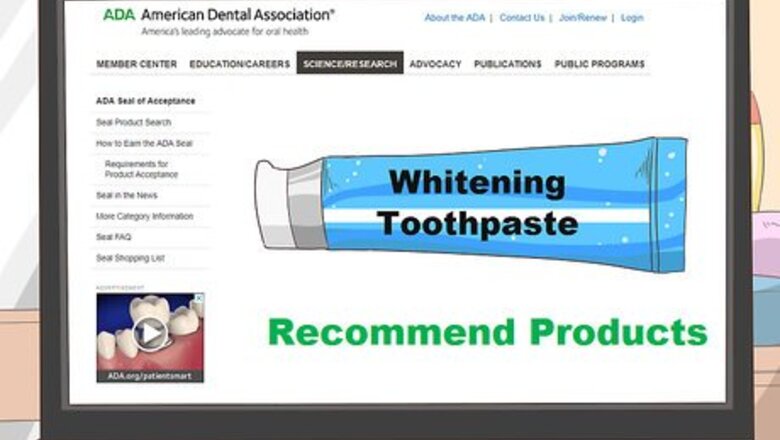
views
Switch to whitening toothpaste.
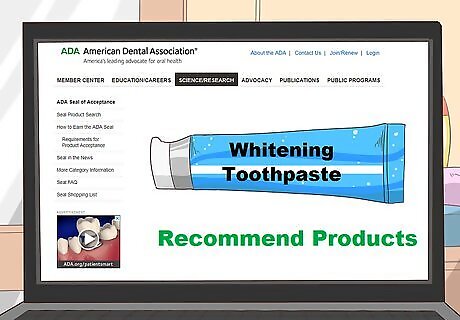
This helps tackle surface stains on your teeth. You can buy these over the counter, at drugstores and supermarkets. Use this instead of your regular toothpaste once or twice per week. For quality assurance, look for products that have the American Dental Association Seal of Acceptance. This means that the organization considers them safe and effective, when used as recommended. A product lacking this seal may still be safe, but it has not been assessed by this program.
Brush with a manual toothbrush and toothpaste containing baking soda.
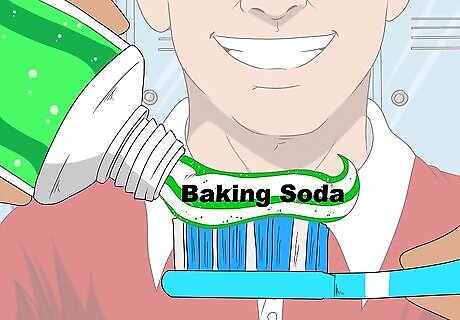
This is a great option to help you tackle stains at home. A manual toothbrush helps you to control the pressure so you don't overdo it and damage your enamel. A baking soda toothpaste eliminates guesswork because the quantity of baking soda is regulated for you, which makes it a safer choice than at-home remedies that rely on self-administered combinations of baking soda and water. Baking soda is best for surface stain removal rather than for dealing with deeper brown stains. Don't use products with baking soda if you have braces, because it can damage them.
Use an at-home whitening kit.
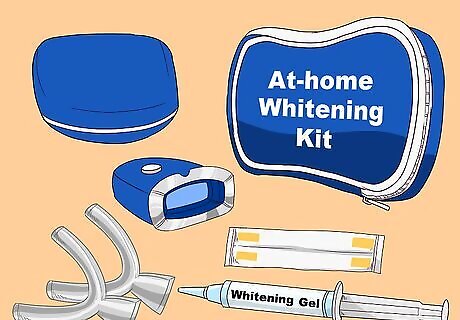
This is a good option for lightly to moderately-stained teeth. When cost or dentist access is an issue, whitening at-home is an option worth exploring. Some do-it-yourself kits are meant to be used with custom whitening trays, which you can also buy online. Alternatively, try simple-to-use whitening strips that are readily available at drugstores. Products come in different strengths. Carbamide peroxide and hydrogen peroxide are common whitening chemicals. Carbamide peroxide contains both urea and hydrogen peroxide, so a whitening product consisting of 10% carbamide peroxide actually contains about 3.5% hydrogen peroxide. If you have sensitive teeth, then select a treatment that contains a lower percentage of these chemicals. Look for whitening strips that have been awarded the American Dental Association Seal of Acceptance.
Seek a laser whitening treatment from a dentist.
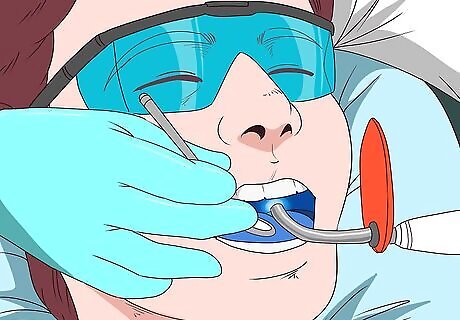
This is a great option if you’d like your stains gone right away. This process involves a dentist painting a bleach product right onto your teeth. The dentist then uses a light or laser to activate the chemicals. Laser whitening usually takes 1 or 2 hours. Its effects can last anywhere from 3 months to several years. Stains caused by trauma, exposure to too much fluoride, or tetracycline antibiotics taken while the teeth were forming are often resistant to whitening.
Deep-bleach your teeth at a dentist’s office.
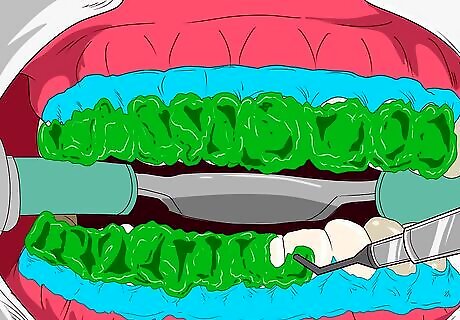
This helps address hard-to-remove stains. The process involves a dentist taking a detailed impression of your teeth and then crafting trays with bleaching reservoirs. This step is followed by an in-office conditioning treatment to make your teeth more responsive to whitening. At home, you wear the trays for 14 nights before returning for an in-office, chairside bleaching. Although this is a more lengthy option, it does yield results. The trays you receive are customized to your mouth and, unless your teeth shift, you can use them indefinitely. It's important to continue using trays on a maintenance basis, typically once every two weeks. While this process often reduces difficult stains, it is expensive.
Polish your teeth at the dentist.
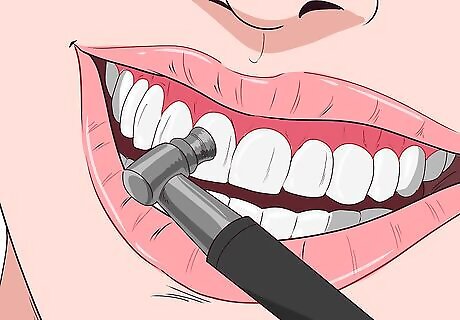
This can help remove minor stains. Teeth cleaning is a routine part of a dental visit. Many dentists recommend patients undergo teeth cleaning twice per year. Tartar can make teeth appear brown. During scaling, this buildup is removed from the teeth. The polishing stage of cleaning helps to get rid of surface stains.
Eliminate stains on the outermost enamel with microabrasion.
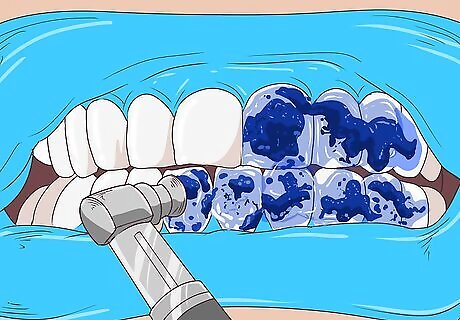
This in-office treatment uses a combination of hydrochloric acid and pumice to rub away stains, and it's more aggressive than just polishing. This is an effective and minimally invasive way to deal with stains.
Try a bonding treatment.
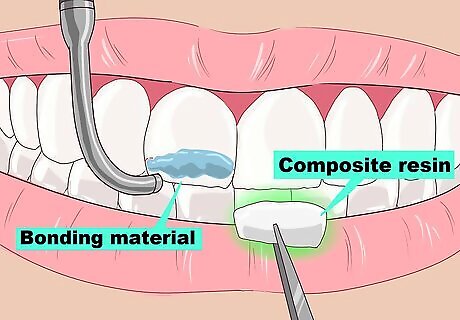
This is usually done for cosmetic purposes, and help improve the appearance of your teeth overall. A dentist roughens the surface of your tooth to allow a bonding material to stick. Then the stained tooth is covered with a composite resin that can be blended to coordinate with your other teeth. Tooth bonding takes between 30 minutes and 1 hour and can be completed within one visit. If you have several stained teeth, you may need to schedule multiple appointments. While the composite resin will cover existing stains, you must not eat or drink any staining substances within 48 hours of its application. Like teeth, it can also stain over time. Be aware that a composite resin lacks the strength of natural teeth and it can chip. This approach may not be a good fit, if you bite your nails.
Talk to your dentist about porcelain veneers.
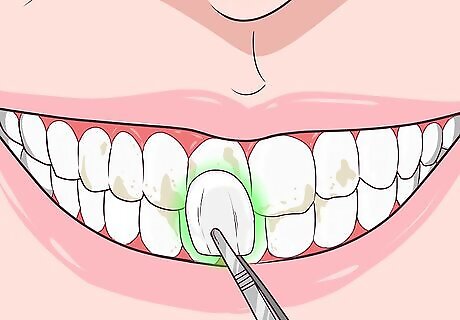
Veneers are a type of cosmetic dentistry that can help mask your stained teeth. Your dentist can create stain-resistant shells that fit over your teeth. Your dentist takes off a little tooth enamel and fits you with temporary veneers. On a second visit, you receive permanent veneers. Veneers are costly but they last for around 15 years.
Get crowns for stained teeth with signs of decay or cracking.
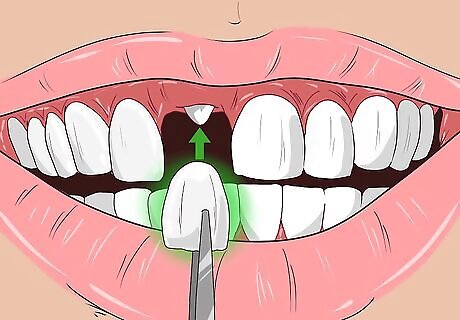
Crowns cover the entire tooth and can sometimes improve the look of your teeth. This is an invasive procedure that requires drilling, anesthesia, and two dental visits. Crowns tend to last for around 15 years.















Comments
0 comment